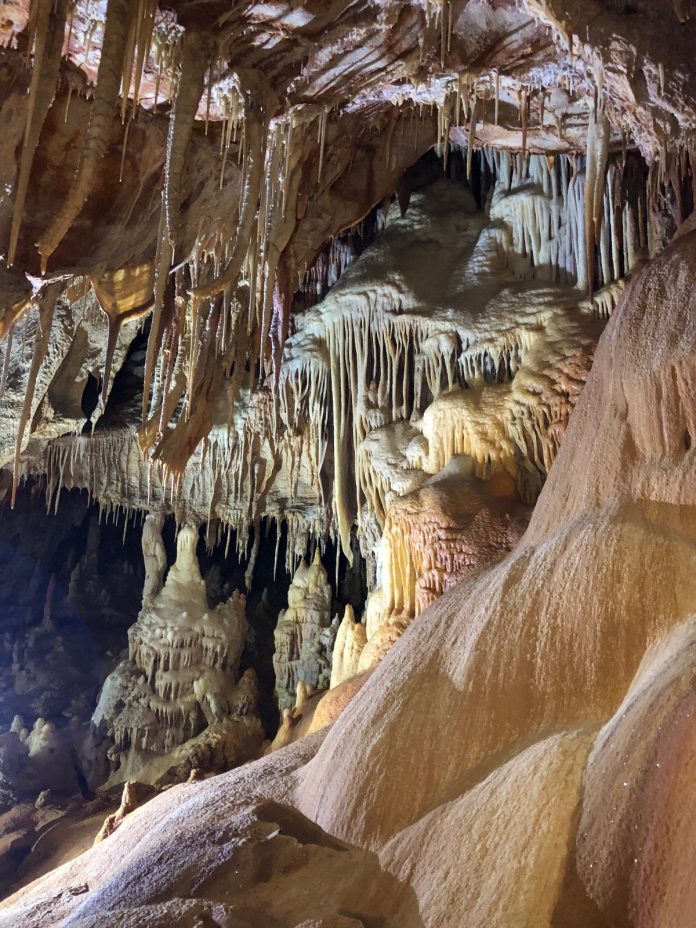by Alessandra Ressa
After months of research, the Adriatic Speleological Society (SAS) has finally confirmed the presence of Leptodirus in the impressive cave known as Golokratna Jama (Crows’ Abyss), one of the most fascinating caves in the Slovenian Karst.

Until now, this small and intriguing cavernicolous beetle had only been documented in a few caves in the classic Karst, such as the Noè Cave near Trieste. However, thanks to two photographic observations taken one year apart, we can now say with certainty that Golokratna Jama also hosts this rare species. This discovery marks a significant advancement in the study of cave fauna.
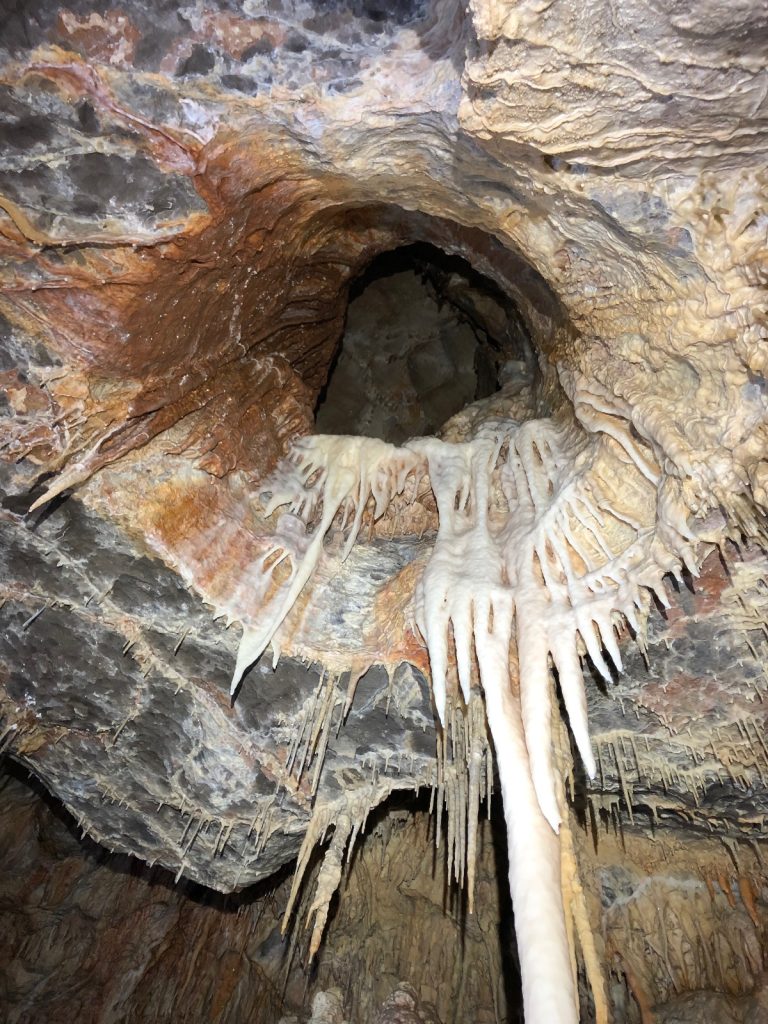
Leptodirus hochenwarti is one of the most mysterious and fascinating creatures in the Karst caves, symbolizing an entire ecosystem that lives in the eternal darkness of underground cavities. This beetle, lacking eyes and pigmentation, is one of the most extraordinary examples of adaptation to life in extreme environments. While the proteus, the iconic blind and depigmented amphibian, is often the best-known face of underground fauna, it is certainly not the only inhabitant of the underground world. In fact, alongside the proteus, there are hundreds of other species that, over millennia, have adapted to life underground, modifying their bodies, metabolism, and habits to survive in an environment devoid of light and resources. The discovery of Leptodirus in the Karst caves marked a crucial step in our understanding of underground life, beginning in 1831 with the first finding of this species in the Postojna Caves.
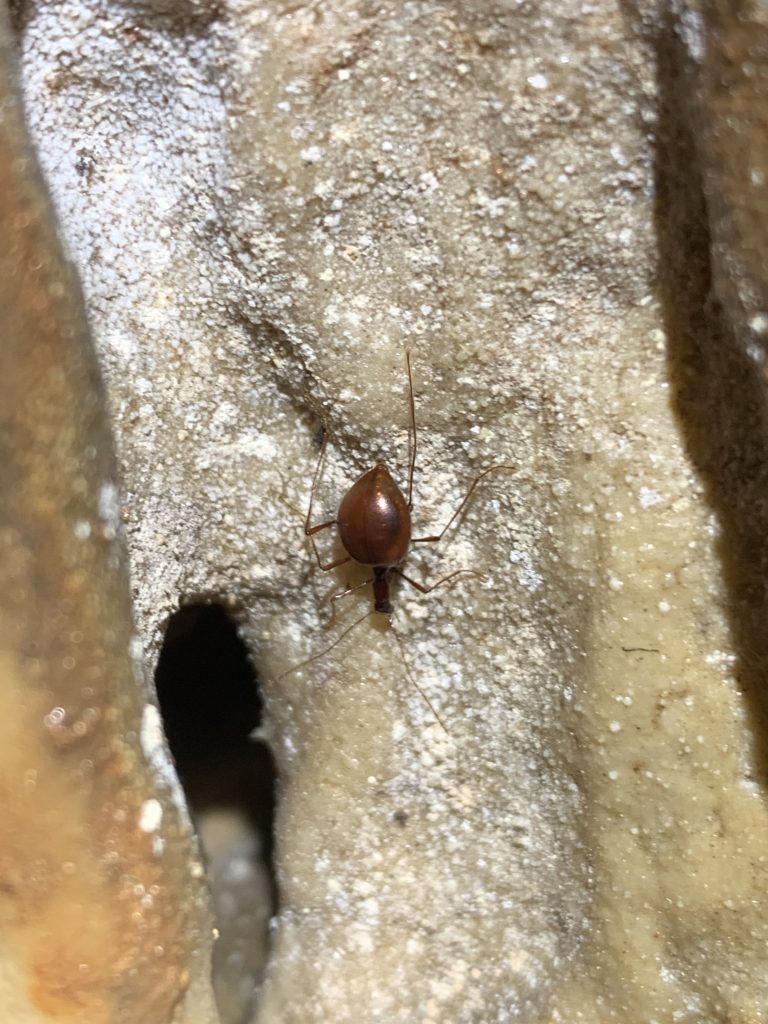
Golokratna Jama is one of the most captivating caves in the Slovenian Karst, known for its majestic entrance—an enormous collapse of the cave’s ceiling—and its breathtaking underground landscape. This cavity, with an entrance that measures about 65 meters in diameter, descends vertically for over 100 meters. Several decades ago, speleologists Claudio Bratos and Stojan Sancin, while exploring the most remote passages of the cave, found a narrow passage at the bottom of the huge vertical pit that led to the discovery of one of the most beautiful caves in the Karst. It’s pristine, rich, blinding white formations and the unual shapes of calcitic concretions, which appear to work against gravity in myserious ways, are a breathtaking and incredibly rare site for cave explorers today.
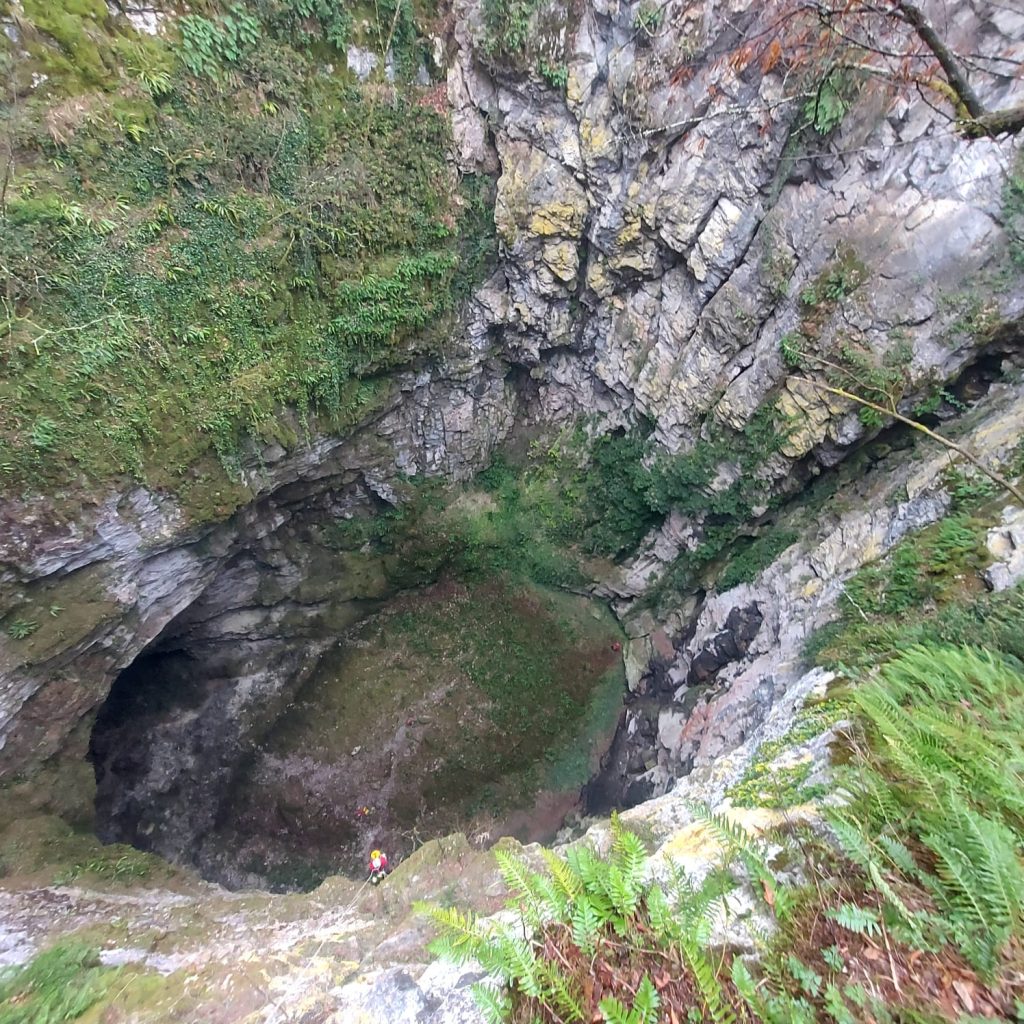
In a recent exploration, Massimiliano Werk, from the Adriatic Speleological Society, had noticed a small insect moving on a concreted wall. Initially, it was unclear which species it might be, but after consulting with experts in the field, it was concluded that it was probably Leptodirus. The presence of this species was later confirmed by SAS speleologist Alessandra Ressa during a visit to the cavity last February, a result that marks a new milestone in the understanding of the Karst’s cavernicolous fauna.

The discovery of Leptodirus hochenwarti in Golokratna Jama is a fundamental achievement, not only because of its rarity but also due to the scientific implications it carries. Entomologist Andrea Colla from the Civic Museum of Natural History in Trieste highlights that, in recent years, Slovenian researchers have been conducting a genetic research project on this rare cavernicolous insect. The identification of this new observation station for Leptodirus will provide vital new data for understanding the distribution of this species and the health of the underground ecosystem.
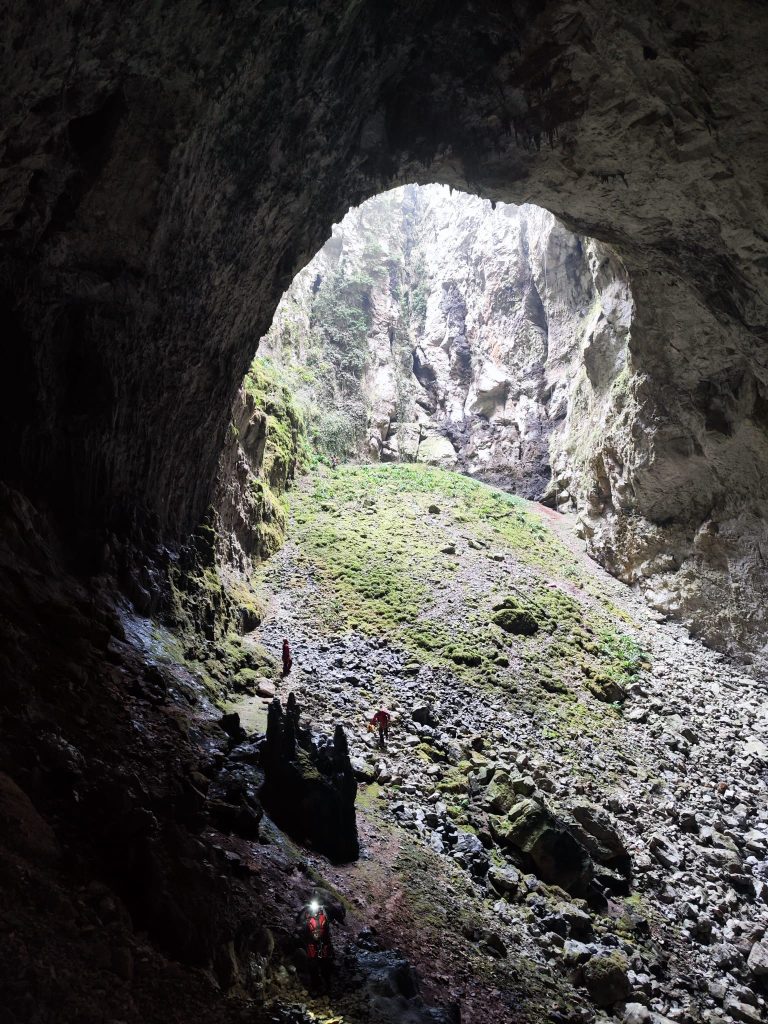
This discovery is part of a research project that SAS and the Civic Museum of Natural History in Trieste have been carrying out together for over a year. Thanks to the collaboration between the two institutions, a catalog of Leptodirus in the museum’s collections has been initiated to study its distribution in the Karst region. This work also led to the creation of a master’s thesis by SAS intern Fabiana Zanon, focusing on the distribution study of this species.
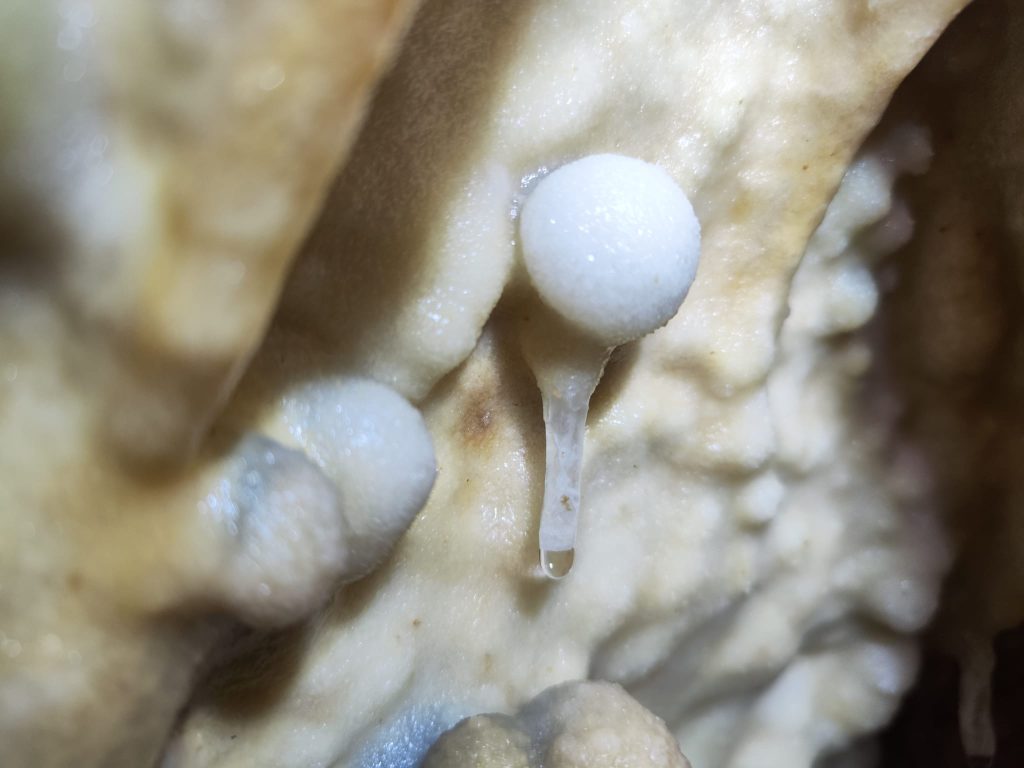
Golokratna Jama is a protected cave, and Slovenian authorities have implemented a series of measures to preserve the site and its underground ecosystem. The presence of Leptodirus hochenwarti in Golokratna Jama adds ecological and scientific value to this extraordinary site, underscoring the importance of continuing to explore and protect Karst caves. Each new discovery not only enriches our knowledge of underground biodiversity but also pushes us to reflect on the importance of preserving these delicate environments.

























